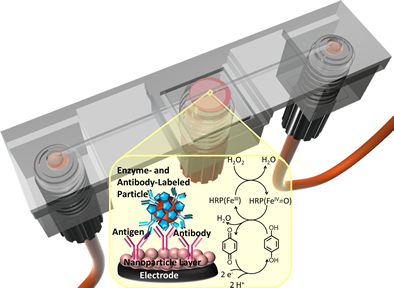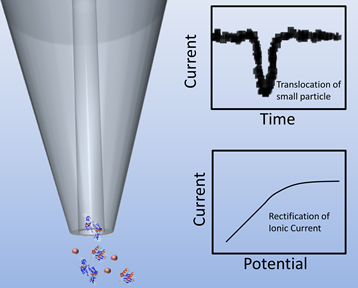Nanomaterials-Based Electrochemical Biosensors

Electrochemical sensors offer several advantages over other sensing technologies due to their relatively low cost of production and simple and inexpensive instrumentation. Though many biomolecules of interest are difficult to directly measure by electrochemical strategies, electrochemical immunoassays and other techniques have been developed. These methods typically enable the measurement of proteins and nucleic acids through labeling with enzymes that produce redox-active compounds or nanomaterials capable of undergoing oxidation or reduction at the electrode surface. Additionally, nanomaterials have also been used to improve electron transport, enhance electrochemical signal, and/or impart electrocatalytic capabilities to the electrode surface. We aim to develop electrochemical and electrochemiluminescence-based biosensors with improved performance by incorporating nanostructured electrodes and nanomaterials-based labeling strategies. We also investigate the effects of nanomaterials on electron transport processes and electrode surface structure in an effort to improve sensor characterization and optimize sensor performance.
3D-Printed Fluidic Devices

Recently, 3D-printing has emerged as a simple and intriguing strategy for producing fluidic devices. While 3D-printing of truly microfluidic devices with channel dimensions on the order of a few micrometers is still not routine, channels with dimensions of tens to hundreds of micrometers or more have been reported. We are developing 3D-printed fluidic devices to serve as platforms for electrochemical and electrochemiluminescence-based sensors.
Sensing and Electrokinetic Studies with Nanopipettes

Nanopipettes can be prepared by laser-pulling capillary tubes with micrometer-diameter openings. Due to their small opening sizes, nanopipettes can be used as platforms for single-molecule sensing through a technique called resistive-pulse sensing. Nanopipettes can also exhibit selective transport properties depending on their geometry and surface charge. We are developing sensing strategies and investigating interesting transport properties of nanopipettes.
Funding


